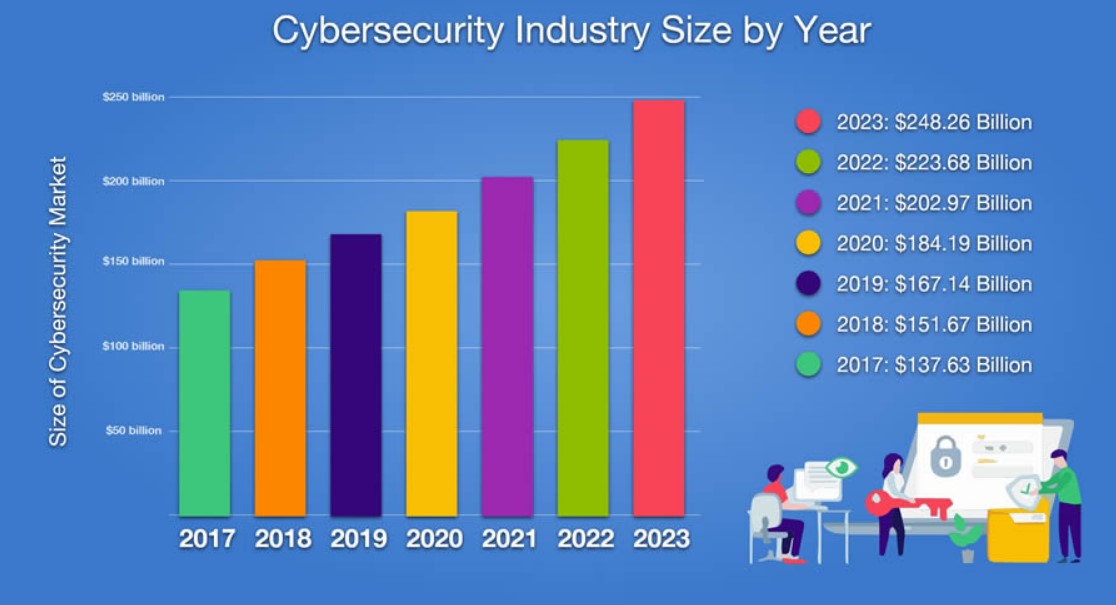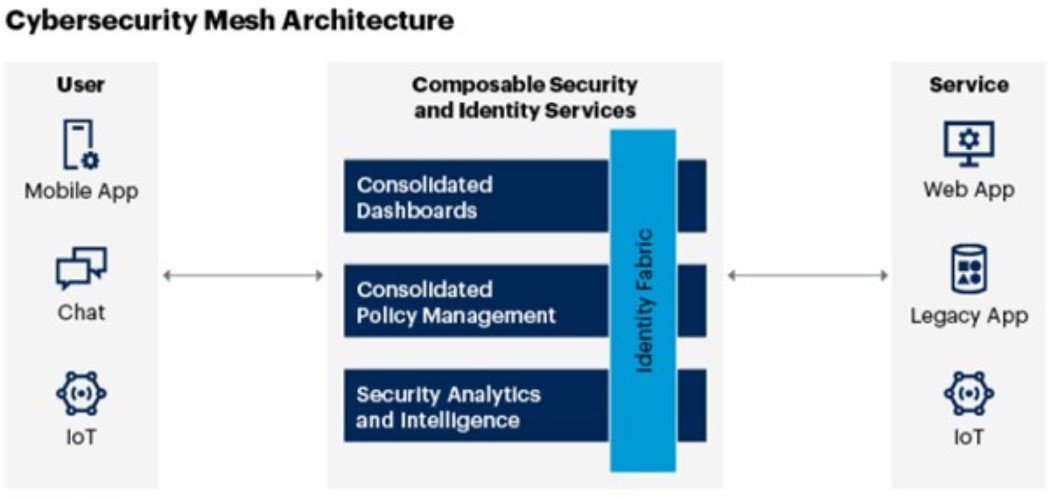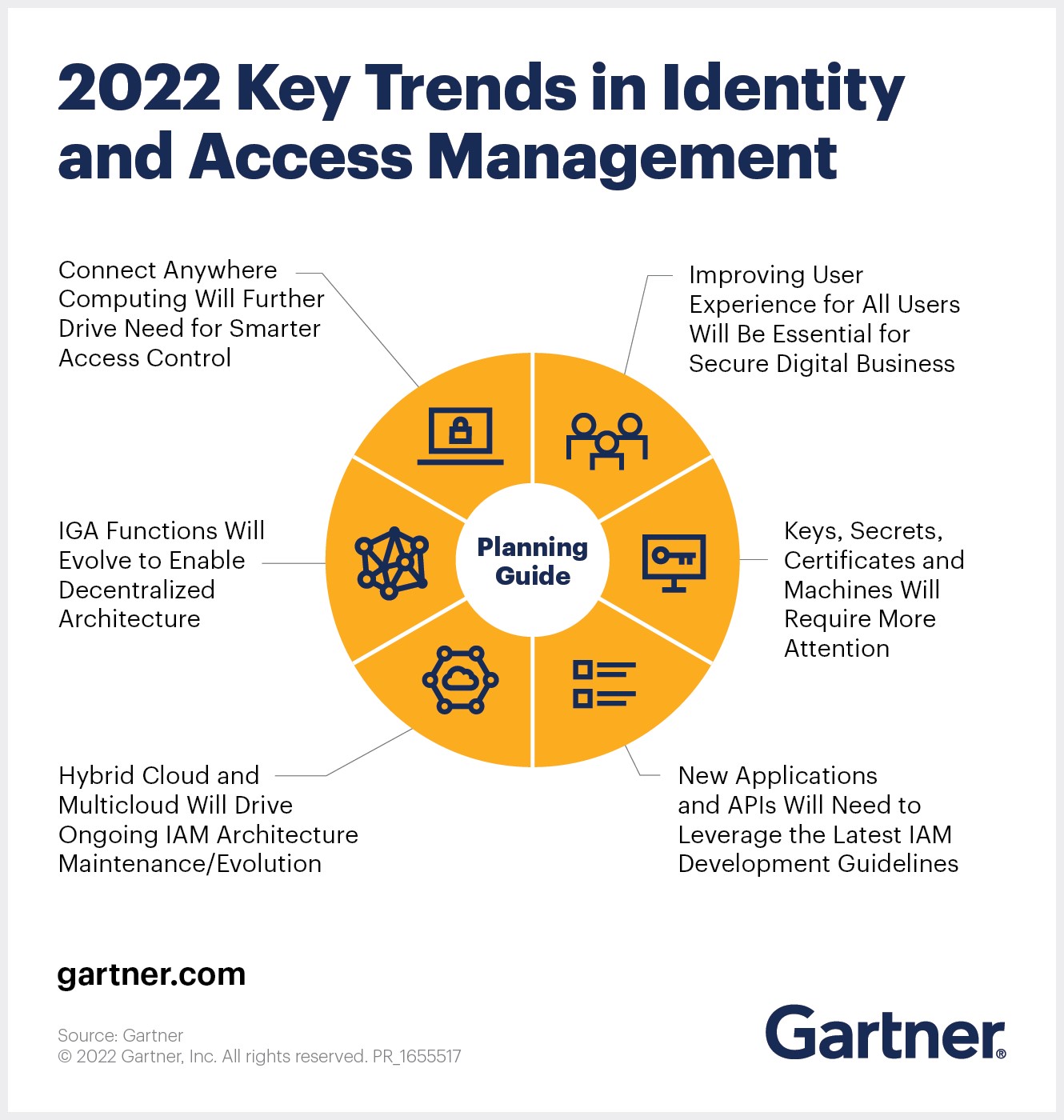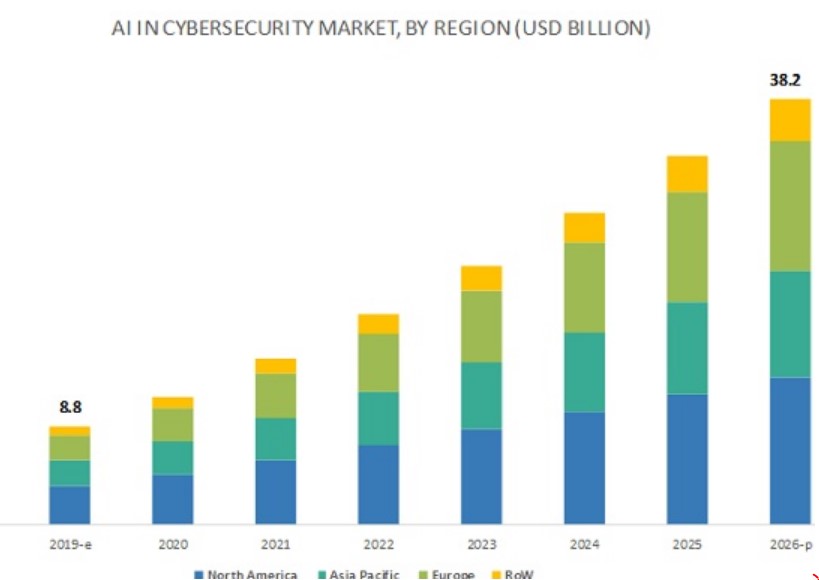Cybersecurity is a fast evolving arena. Cyber Criminals keep coming up with new techniques and tools to infiltrate the most secure systems while cybersecurity professionals are working hard to prevent that. Both are trying to outdo one another which leads to use of new tactics from both sides. This speeds up the pace of evolution of the cybersecurity industry as a whole.

In order to keep pace with the ever changing cybersecurity landscape, you need to be fully aware of the latest cybersecurity trends as well as older cybersecurity trends. Wondering how the cybersecurity industry will evolve in 2023? Which cybersecurity trends will take off and which ones will die down? You are at the right place. In this article, you will learn about top ten cybersecurity trends that will dominate in 2023.
- Top 10 Cybersecurity Trends For 2023
- 1: State-Sponsored Cyber Warfare
- 2: Data Governance and Privacy Regulations
- 3: Adoption of Cybersecurity Network Architecture
- 4: Access Management Takes Center Stage
- 5: Cybersecurity Will Impact Your Revenue
- 6: Cloud and Mobile Will Feel The Heat
- 7: Operational Technology Is The New Target
- 8: Artificial Intelligence and Machine Learning
- 9: Ransomware Is Still a Big Threat
- 10: Sophisticated Social Engineering Attacks
Top 10 Cybersecurity Trends For 2023
Here are top ten cybersecurity trends for 2023 that you need to watch out for.
1: State-Sponsored Cyber Warfare
Geopolitical tensions between different countries directly impact the cybersecurity landscape. Even before the Russia-Ukraine war, news of state sponsored cyberattacks were running rampant. Russia-Ukraine war added more fuel to that fire and we might see tensions escalate between different countries in 2023 which would lead to an exponential rise in state sponsored attacks on critical installations. This means that the risk of state sponsored cyber warfare will be higher than ever in 2023.

2: Data Governance and Privacy Regulations
According to Gartner’s forecast, the latest data governance and privacy regulations will cover 75% of the world’s population by 2024. GDPR kick-started this trend but literally every country has released their local version of data governance and privacy regulations since then.
Some of the notable examples include Turkey’s Personal Data Protection Act and Brazil’s General Personal Data Protection Act. Not even countries, even states like California have introduced the Consumer Privacy Act. This clearly shows that this trend is trickling down to a more local level. Expect other countries and states to jump on this trend in 2023.

3: Adoption of Cybersecurity Network Architecture
With enterprises using dozens of different technology platforms and tools at once, their enterprise attack surface is growing exponentially. They need a flexible security solution that can look at the threats coming from outside their security perimeters. Cybersecurity mesh architecture not only provide better visibility and control but also reduce the cost of security incidents drastically.

It even lets you apply policy based controls easily and provides a unified view by consolidating everything in one place. With real time insights and better visibility into your network, you are in a much better position to respond to the latest cybersecurity threats. Gartner predicts that organizations adopting cybersecurity mesh architecture by 2024 can slash the financial damage caused due to these security incidents by as much as 90%.
4: Access Management Takes Center Stage
The growing enterprise attack surface is paving the way for increased complexity. In 2023, we will see businesses move towards consolidation and put more emphasis on optimizations. Instead of managing dozens of different tools from separate vendors, they would prefer fewer and more integrated tools from the same vendor.

In fact, almost one third (30%) of organizations will implement cloud based security gateway, firewall as a service solution, zero trust network access and cloud access security broker from the same vendor. This will significantly reduce the complexity and make access management a whole lot easier. With centralized management and visibility, businesses can minimize the risk of cybersecurity attacks and data breaches caused due to poor access management and controls.
5: Cybersecurity Will Impact Your Revenue
Did you know that 60% of organizations will now evaluate your cybersecurity risk before building business relationships or conducting third party transactions with your business? Even though venture capitalists and investors have long been looking at cybersecurity risk, businesses are quick to catch up.
Expect to see cybersecurity risk questions pop up more often during merger and acquisitions and vendor agreements in 2023. The growing number of supply chain attacks are also forcing businesses to be more vigilant when it comes to choosing their partners. This means that they would look at your security ratings, conduct in-depth surveys as well as ask for more data on your partner’s cybersecurity programs.

6: Cloud and Mobile Will Feel The Heat
As more and more businesses migrate their workloads to the cloud from on-premises dedicated servers, the demand for cloud security solutions and services will continue to go up. This will also lead to cloud infrastructures getting more attention from cybersecurity attackers. Organizations will have to ramp up their investments in cloud security solutions to protect them from cloud security threats. They should avoid making cloud configuration mistakes that lead to cloud centric data breaches.

Just like the cloud, mobile is also getting more attention from both consumers and threat actors. As more and more people rely on mobile apps for making financial transactions, it will become the prime target for hackers. According to a research conducted by Kaspersky, 97,661 new mobile banking trojans with 17,372 new mobile ransomware trojans were detected in 2021 alone. Don’t expect this trend to slow down anytime soon. In fact, it will only accelerate with the passage of time.

7: Operational Technology Is The New Target
Gone are the days when cyberattackers used to launch attacks which only targeted your information technology infrastructure. In 2023, they will be coming after your operational technology infrastructure as well. The scariest part is that they will be using your operational technology as a weapon to harm and threaten the lives of humans.
According to Gartner, cyber criminals will gain enough control over operational technology infrastructure by 2025 that they can cause human casualties. The financial losses caused due to attacks on cyber physical systems that result in human deaths will reach $50 billion by 2023.
How can you prevent cyberattackers from harming and killing humans? By implementing a security control framework. Here are some of the steps you can take to minimize the risk of operational technology attacks:
- Maintain an inventory of all your assets
- Create an incident response plan and test it
- Have backup and recovery processes in place
- Maintain logs and leverage real time detection
- Segregate your network
- Establish a secure configuration and frequent patching process

8: Artificial Intelligence and Machine Learning
The number of cybersecurity attacks launched these days are overwhelming so much so that humans are struggling to handle them. That is where artificial intelligence and machine learning comes into play. By automating threat detection and response via AI and ML, businesses are saving a lot of time, money. This also allows their understaffed cybersecurity teams more breathing room.

Just like businesses, threat actors are also using these technologies to their advantage. They are using automated tools that allow them to launch sophisticated cyberattacks, which can not be blocked by cybersecurity systems. 2023 will be the year where we will see a winner coming out of this battle.
9: Ransomware Is Still a Big Threat
Ransomware has been around for decades now but it has evolved into something more complex over those years. The ease at which attackers can launch ransomware attacks these days combined with financial reward attached to it forces them to double down on it.

This is further fueled by organization negligence towards maintaining a regular backup of their data and testing it. With machine learning and dark web on their side, expect a barrage of ransomware attacks targeting businesses and critical infrastructure in 2023 as well.
10: Sophisticated Social Engineering Attacks
Just like ransomware attacks, social engineering attacks are nothing new. What’s changed is their complexity and sophistication. Instead of launching traditional phishing attacks, cyberattackers will resort to more difficult to detect delayed phishing attacks and spear phishing attacks in 2023. Same goes for other types of social engineering attacks such as tailgating, baiting, watering holes, whaling attacks and reverse social engineering attacks.

Which cybersecurity trend will make the biggest impact in 2023 in your opinion? Share your thoughts with us in the comments section below.





Add comment